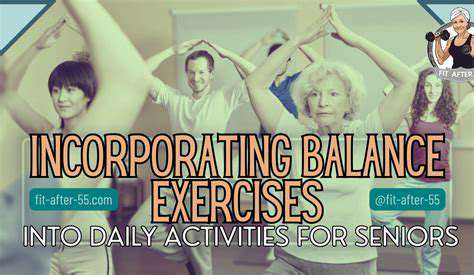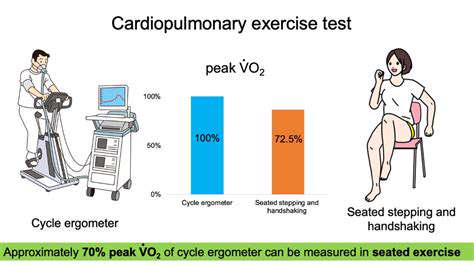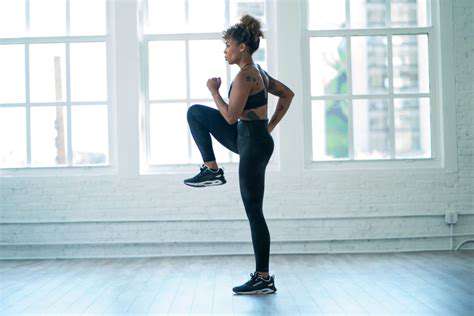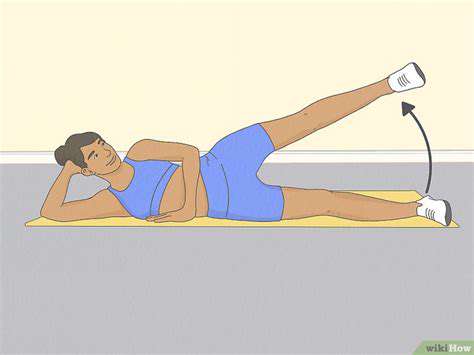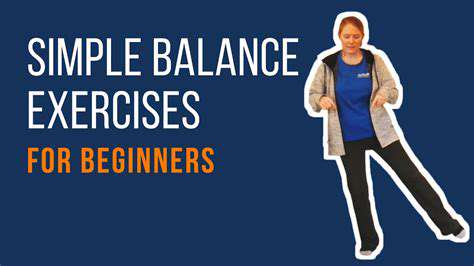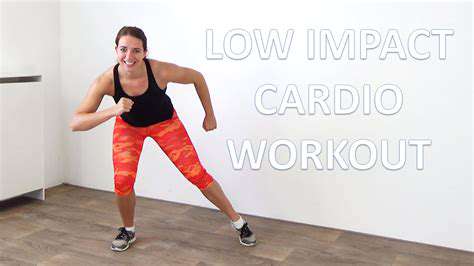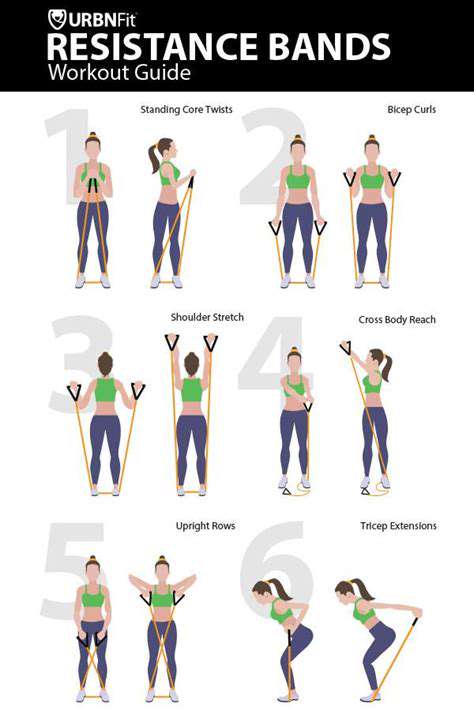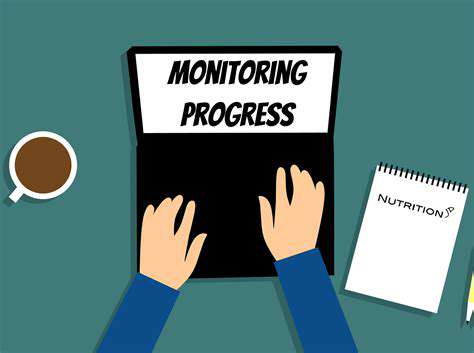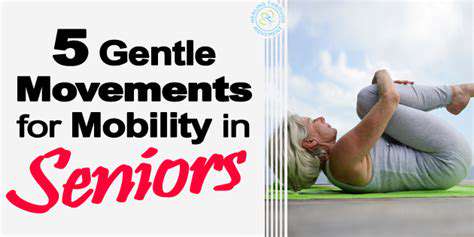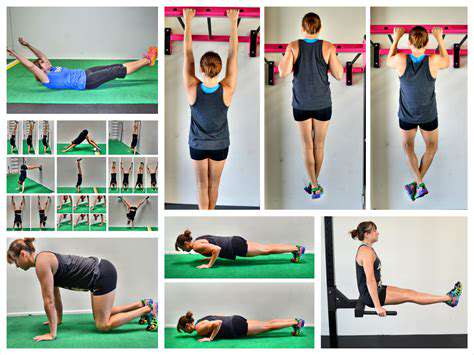Exercises to Make Everyday Tasks Easier for Seniors
Strengthening Core Muscles for Stability and Balance
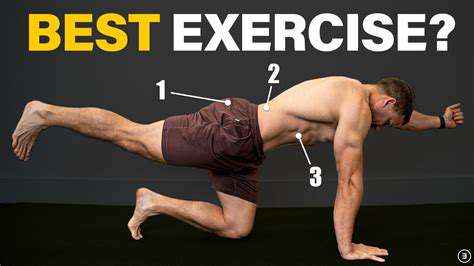
Strengthening Core Muscles for Stability and Performance
Core strength plays a pivotal role in nearly every physical movement we make, whether it's picking up a child or swinging a golf club. When your core is strong, your entire body moves with greater efficiency and control. This foundational strength supports proper alignment, reduces strain on the spine, and enhances athletic performance across all disciplines. Both weekend warriors and professional athletes benefit tremendously from core development.
Functional core training goes beyond six-pack abs - it's about creating a stable platform for life's demands. A well-conditioned core acts like a natural weight belt, protecting your back during heavy lifts and everyday activities. This translates to fewer aches, better movement quality, and increased resilience against injuries. Investing in core strength pays dividends throughout your lifespan, from carrying groceries to maintaining independence in later years.
Effective Exercises for Core Strengthening
The plank family offers exceptional value for core conditioning. Standard planks challenge the entire anterior chain, while side planks target obliques and lateral stability. For advanced practitioners, adding movement (like plank shoulder taps) increases the neuromuscular demand. These isometric holds build endurance while teaching proper alignment.
Dynamic exercises like dead bugs and bird dogs provide excellent core activation with minimal spinal loading. These movements teach coordinated muscle firing patterns that translate directly to real-world movements. When performing any core exercise, quality always trumps quantity - better to do five perfect reps than twenty sloppy ones.
Importance of Proper Form and Technique
Precision matters tremendously in core training. Common mistakes like overarching the low back during crunches or letting hips sag during planks can do more harm than good. Proper technique ensures the right muscles work while protecting vulnerable joints. Mirror checks or video recordings can provide valuable feedback on your form.
Breathing mechanics are equally crucial - many people inadvertently hold their breath during core work. Practicing diaphragmatic breathing while maintaining tension develops true functional strength. Consider working with a certified trainer initially to establish proper movement patterns before progressing independently.
Nutrition and Recovery for Optimal Results
Muscle development requires proper fuel - not just protein, but a spectrum of micronutrients. Omega-3 fatty acids from fish or flaxseeds help reduce exercise-induced inflammation, while colorful vegetables provide antioxidants for recovery. Hydration plays an often-overlooked role in muscle function and recovery.
Active recovery days featuring light movement (walking, swimming) promote blood flow without overtaxing the system. Your muscles actually grow during rest periods, not during workouts themselves. This biological reality makes recovery non-negotiable for consistent progress. Tracking sleep quality can reveal important recovery insights.
Integrating Core Strengthening into Daily Life
Core engagement shouldn't be confined to workout sessions. Simple habits like bracing your core when standing up from a chair or maintaining posture while driving accumulate significant benefits over time. These micro-workouts reinforce neuromuscular connections throughout the day.
Ergonomic adjustments like using a standing desk or stability ball chair encourage subtle core activation during work hours. The most effective fitness strategies are those that seamlessly blend into your existing routine. This approach leads to sustainable results without requiring massive time commitments.
Improving Flexibility and Range of Motion for Easier Movement
Warm-up Exercises for Enhanced Mobility
Preparing your body for movement is crucial for preventing injuries and maximizing your range of motion. A proper warm-up gradually increases blood flow to the muscles, making them more pliable and less susceptible to strain. Start with gentle stretches, holding each for 20-30 seconds, focusing on major muscle groups like the hamstrings, quadriceps, and calves. These initial stretches should be static, meaning you hold the stretch, rather than dynamic movements. This gradual approach primes your body for more intense activities and helps improve flexibility and overall joint health.
Simple arm circles, leg swings, and torso twists can also be incorporated into your warm-up routine. These dynamic movements increase blood flow and prepare the muscles for the demands of more complex exercises. Remember to listen to your body and stop if you feel any sharp pain. A well-structured warm-up routine will significantly contribute to a smoother and more efficient workout, leading to better results and a reduced risk of injury.
Targeted Stretches for Specific Muscle Groups
Improving flexibility isn't a one-size-fits-all approach. Different muscle groups require specific attention to achieve optimal range of motion. For example, hamstring stretches are essential for maintaining flexibility in the lower back and improving posture. Gentle hamstring stretches, like the seated forward bend, can help alleviate tightness and increase flexibility in these crucial muscles. Hold each stretch for at least 30 seconds to allow the muscles to lengthen and adapt.
Similarly, hip flexor stretches are important for maintaining good posture and preventing pain in the lower back. Kneeling hip flexor stretches, where you bend forward at the hips while maintaining a straight back, are excellent for targeting this often-overlooked muscle group. Remember to focus on controlled movements and avoid bouncing or jerking during the stretches. Properly targeting specific muscle groups through dedicated stretches will lead to more comprehensive improvements in your flexibility.
Don't neglect your chest and shoulder muscles. Open chest stretches, such as doorway stretches, and shoulder blade squeezes can help alleviate tightness and improve posture, allowing for a wider range of motion in the upper body. These stretches are crucial for activities that involve overhead movements and daily tasks that require shoulder mobility.
Progressive Exercises for Enhanced Range of Motion
Building flexibility is an ongoing process that requires consistent effort. Gradually increasing the intensity and duration of your stretching routine will maximize your range of motion. Start with beginner-level stretches and gradually progress to more advanced poses as your flexibility improves. This progressive approach ensures that your body adapts to the increasing demands while minimizing the risk of injury.
Incorporating yoga or Pilates into your routine can significantly improve flexibility and range of motion. These practices use a combination of poses and controlled movements to target different muscle groups and improve overall body awareness. Yoga and Pilates promote not just physical flexibility, but also mental well-being and focus. These practices provide a holistic approach to improving your overall physical and mental health.
Enhancing Upper Body Strength for Everyday Tasks

Building a Foundation for Upper Body Strength
Developing a strong upper body is crucial for overall fitness and well-being. It enhances daily activities like lifting objects, carrying groceries, and performing household chores. A strong upper body also helps protect your joints and reduces the risk of injury. Furthermore, building upper body strength can contribute to improved posture and balance, important factors as we age. Starting with a solid foundation is key to preventing injuries and maximizing results.
This foundation involves understanding the fundamental exercises and proper form. Learning to isolate muscles and control movements is important for long-term gains. Consistent practice and progressive overload are essential for building strength and reaching your fitness goals. Understanding the interplay between various muscle groups and their functions will aid in creating a comprehensive training program.
Targeting Key Muscle Groups
Focusing on exercises that target the major upper body muscle groups, such as the chest, back, shoulders, and arms, is essential for a well-rounded strength program. Developing balanced strength in these areas can lead to improved performance in various activities and sports. For example, exercises like bench presses, rows, overhead presses, and curls directly engage these important muscle groups, improving strength and definition.
Compound movements, which work multiple muscle groups simultaneously, are highly effective for building overall upper body strength. These exercises not only target the muscles but also improve coordination, balance, and overall body awareness. Examples include pull-ups, push-ups, and dips. These movements also often require less equipment compared to isolation exercises.
Proper form is paramount when performing exercises to maximize results and reduce the risk of injury. Understanding how to engage the target muscles correctly will contribute to optimal results.
Progressive Overload and Consistency
Progressive overload, which involves gradually increasing the weight, reps, or sets over time, is crucial for consistent strength gains. This gradual increase in demand forces your muscles to adapt and grow stronger. Ignoring this principle can lead to plateaus and hinder progress. It's important to listen to your body and adjust the intensity and volume of your workouts as needed.
Consistency is key to seeing results. Regular workouts, even if they are short, are more effective than sporadic intense sessions. Creating a sustainable routine that fits your lifestyle and schedule is essential for long-term success.
Rest and recovery are equally important to allow your muscles time to repair and rebuild. Adequate rest periods between workouts are crucial for avoiding overtraining and optimizing muscle growth. Listen to your body and prioritize sufficient sleep and nutrition for optimal recovery.
